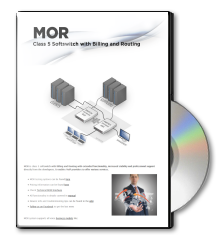Starting a calling card business is not difficult, and it offers a great opportunity for VoIP newcomers. The world of communications has rapidly changed over the past years, and the use of calling cards has increased in popularity with users who want to use telecommunication options that don’t require an internet connection. A VoIP infrastructure is made up of both hardware and software. Here’s a brief guide focusing on the technical elements you’ll need to start such a business.
Softswitch
A softswitch (short for “software switch”) is both the heart of your calling card business and the brains that run it. It controls VoIP transactions, call routing, customer records, and customer billing. It manages all inbound and outbound calls as well as rates and reporting. A softswitch also handles interactive voice responses (IVR) that are played to callers when they use a card.
Softswitch ratings are based on the number of concurrent calls the switch can handle (for example, 400 calls or 1,000 calls). In addition to stability, scalability, security, and ease of operations, other features you’ll need to consider when choosing a softswitch are call connectivity efficiency and call routing mechanisms. Make sure the softswitch also comes with built-in billing; otherwise, you’ll have to purchase separate billing software.
Because the softswitch is the most critical component of your calling card business, you shouldn’t sacrifice performance for cost savings. Quality is equally important as price, and you should choose a reliable partner with decent support options.
Virtually all softswitch providers offer buyout or hosted/rented options, and many offer free trials. Both renting and buying have pros and cons; choose the scenario that works best for you, and make sure your provider offers full support for the gateway you choose.
If you do decide to buy a license, you’ll also need a server that houses your billing software and other critical data. You should use a rack mount as opposed to a desktop system, and you should make sure you have at least one backup hard drive. A good VoIP provider will offer a fully managed hosting space with power backup and 24/7 technical support, meaning they handle the heavy lifting of the business for you.
Incoming and Outgoing Providers
If you want to offer your customers calling card use without requiring access to the Internet, you’ll need a softswitch that supports Direct Inward Dial (DID) numbers. Once the caller dials the DID local number, they’ll hear a prompt to enter their destination number; the call is then connected. Finally, VoIP call termination provides a route through which the caller’s voice can be transmitted.
Print cards or sell them online
The next step is to design and print the actual calling cards. They should be attractive and provide instructions that are easy to read and understand. This is another area where quality is key. Pay special attention to the scratch area to make sure the strip over the PIN code is durable but easily removed (without scratching out the code itself). Sell your calling cards through internet cafes, hotels, newsstands and other retail outlets. Businesses located in high-traffic tourist areas are ideal. If you’d rather offer online cards only, talk with your provider to set that up.
Wrap-up
As with any endeavor, starting a calling card business involves a learning curve. These basics should get you started, but fortunately, you don’t have to go it alone—a number of experts are out there, ready and willing to help you succeed.
| If you want to try real Calling Card system, download testing version of MOR Class 5 Softswitch which provides infrastructure to start PINless Calling Card business without any risk! |
 |
If you have any questions or comments – let us know!
